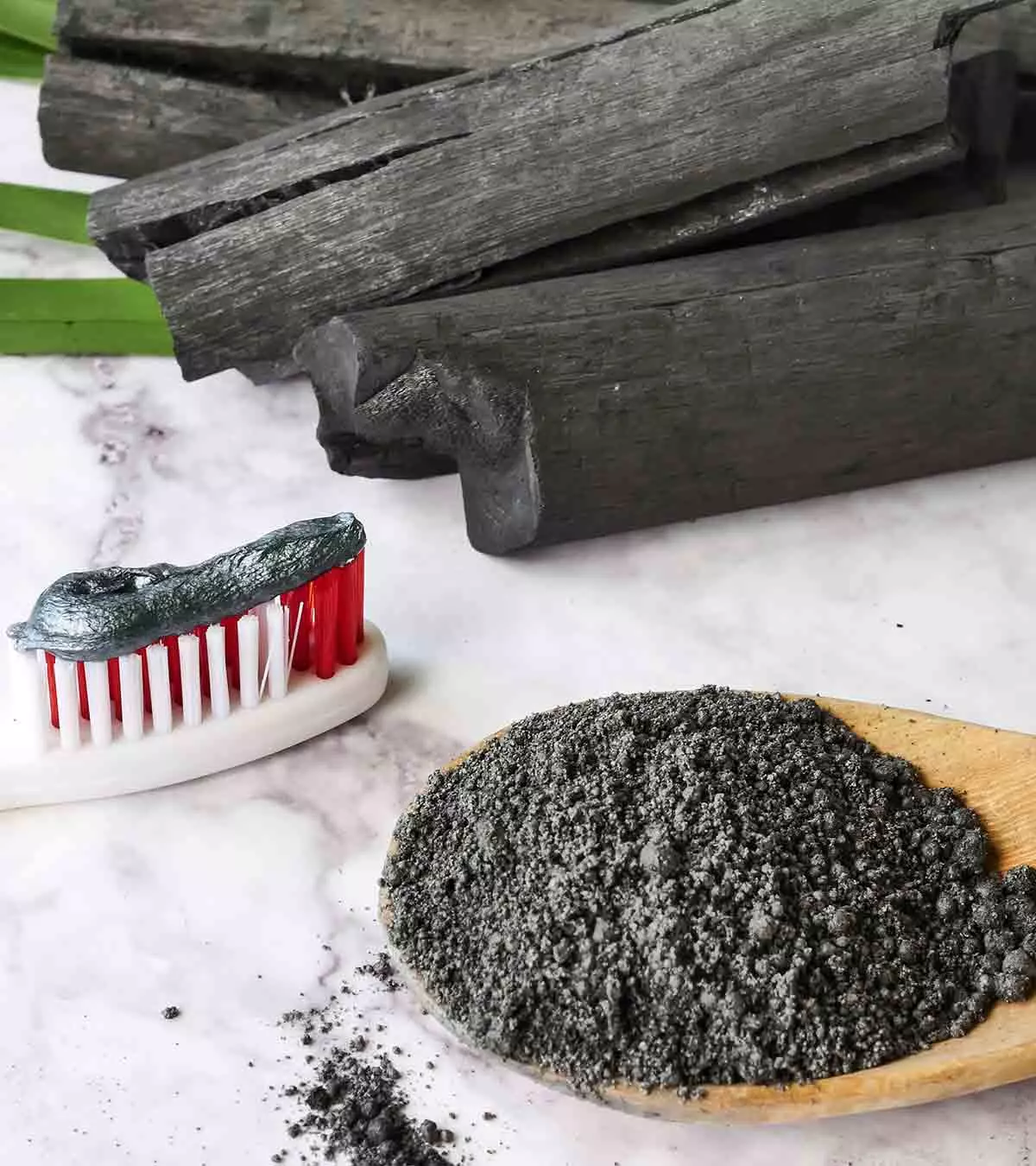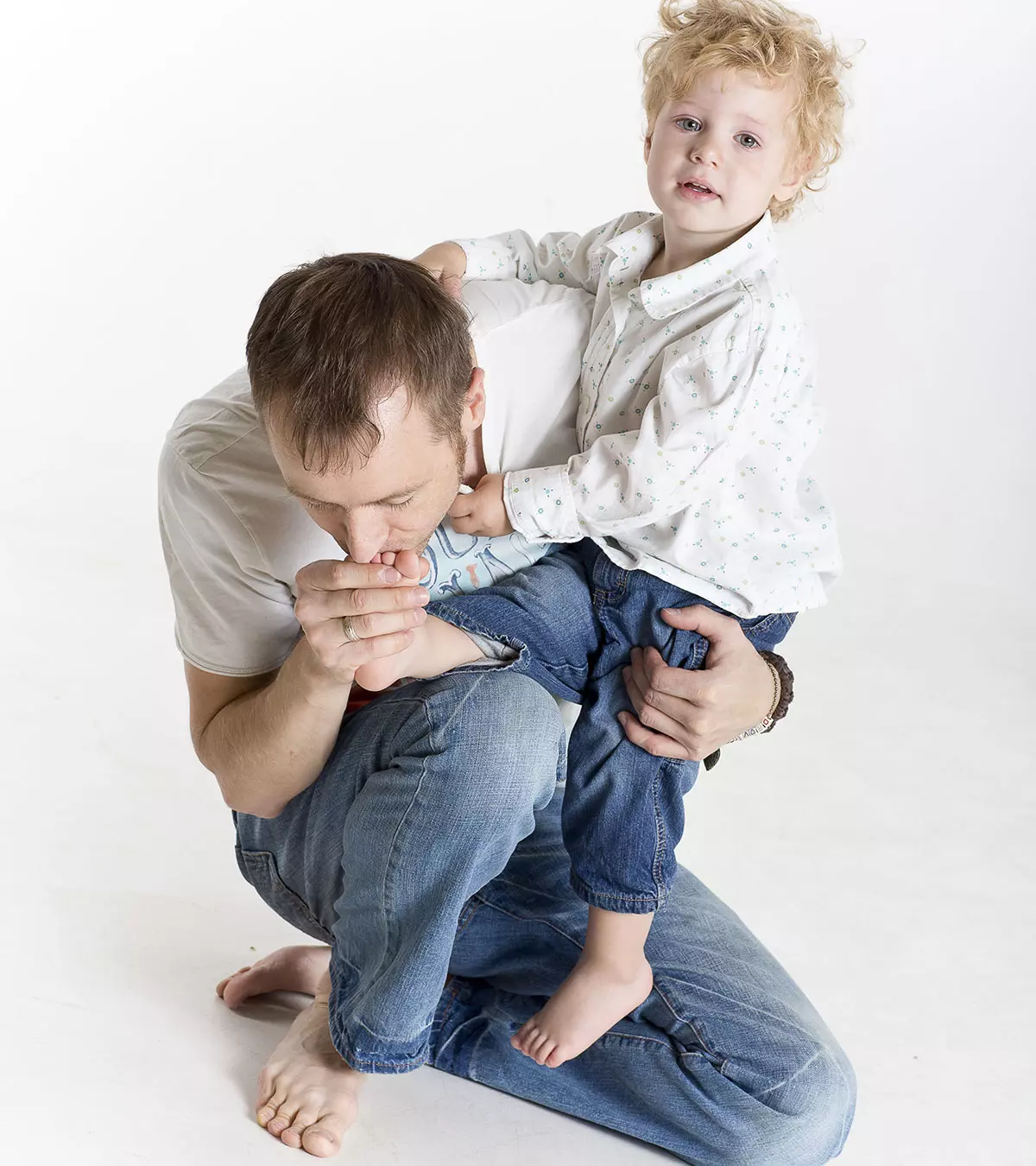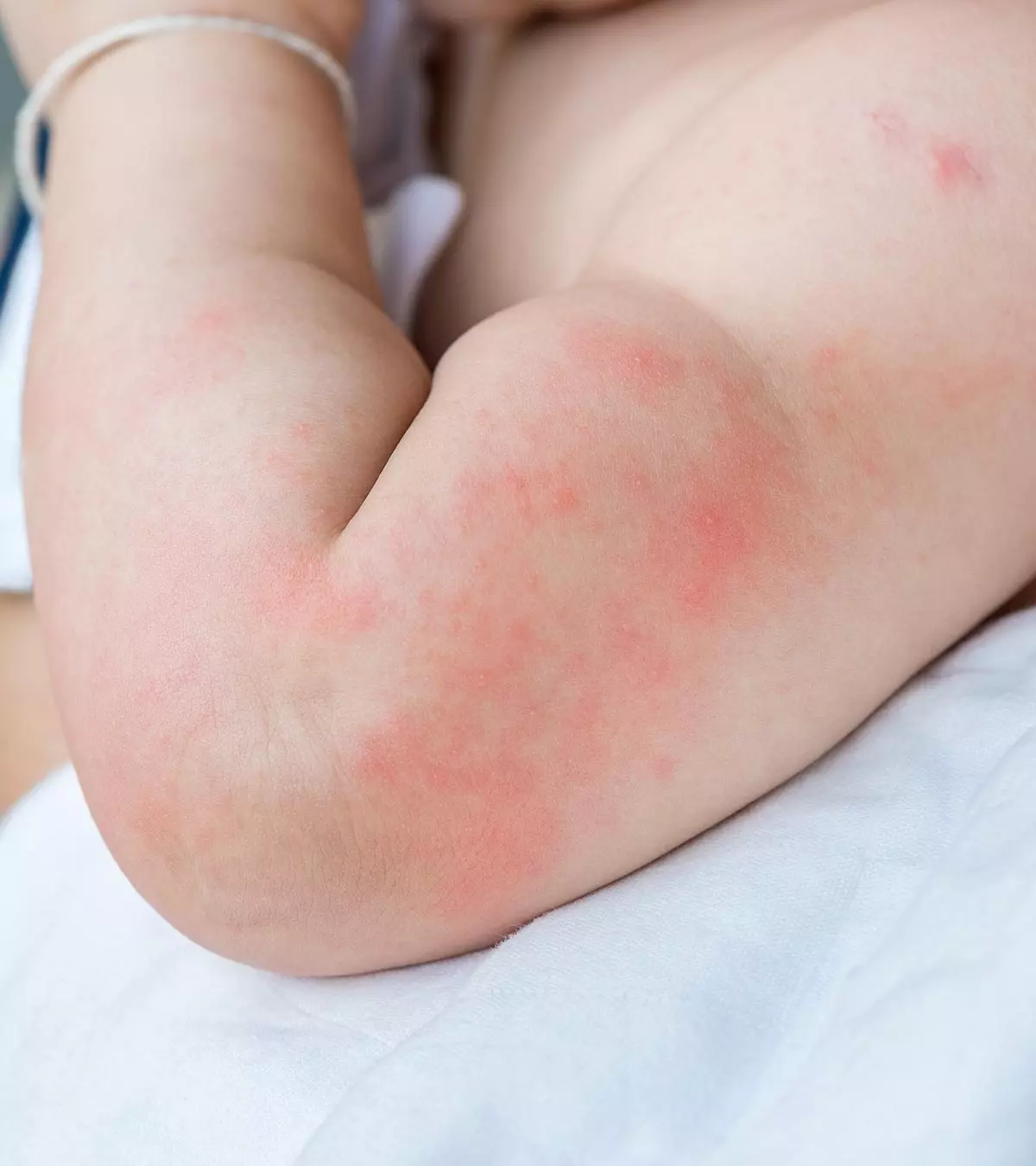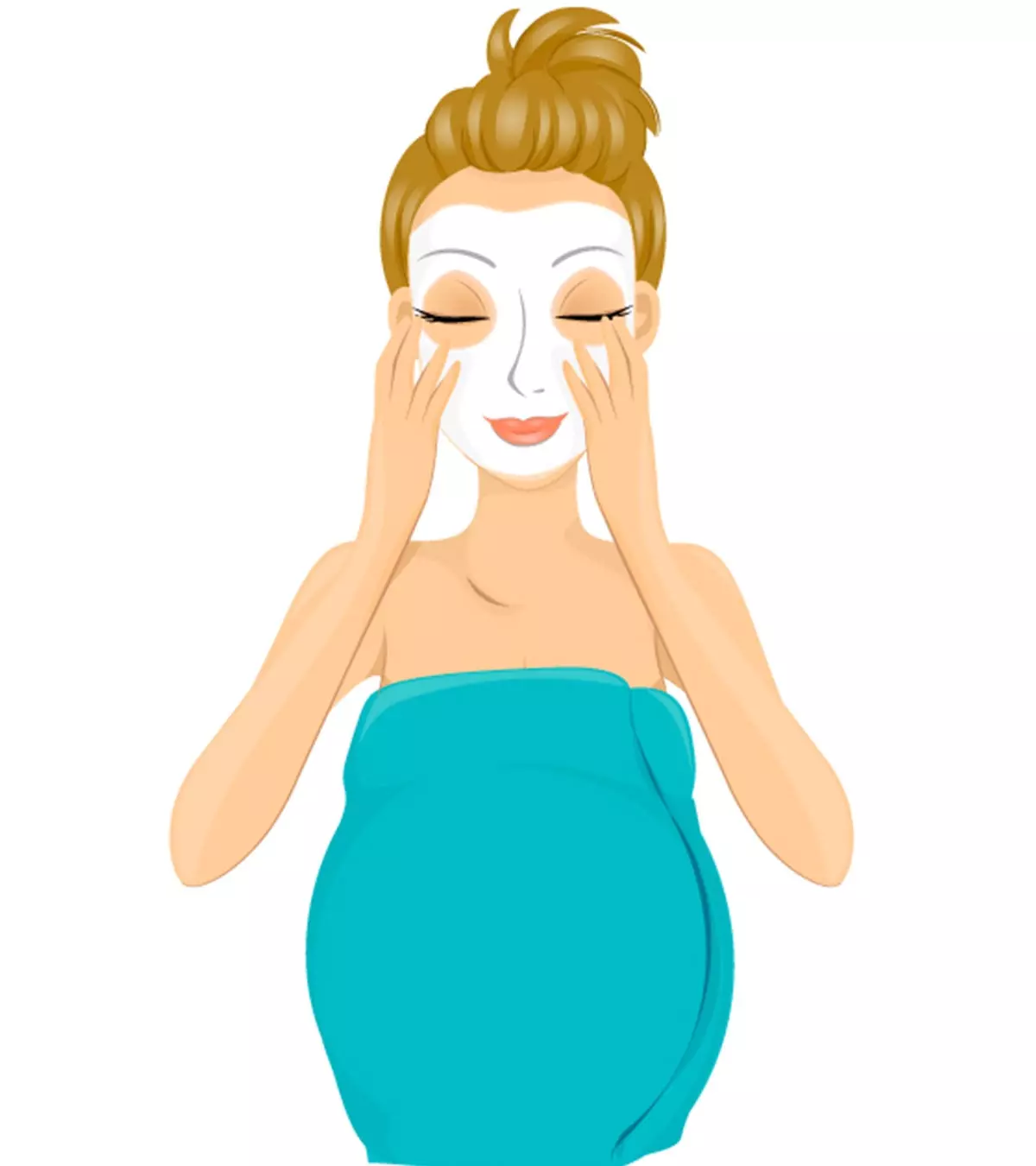
Image: Midjourney/ MomJunction Design Team
Tooth discoloration in babies can be a common concern for parents, often signaling underlying health issues or dietary habits that require attention. However, it is a common problem and can be cured if identified early. The teeth may become off-white, gray, yellow, or brown for various reasons. For example, oral hygiene, certain medications, or physical conditions can cause teeth discoloration, and resolving the underlying causes may revert the color changes in some babies. It’s essential to consult a pediatric dentist to understand the reasons behind these changes, as some discolorations may indicate more serious conditions that need to be addressed promptly.

Read on to learn more about the causes, prevention, and treatment of teeth discoloration in babies and toddlers.
Key Pointers
- Babies and toddlers often experience tooth discoloration, which can vary in severity depending on the underlying cause.
- Typical reasons for tooth discoloration in infants include medication usage, improper brushing, excessive sugar intake, and tooth damage.
- The color of the stain on the tooth may vary depending on the cause, such as yellow, red, or brown patches.
- Regular dental check-ups are necessary to monitor the baby’s dental health.
What Causes Tooth Discoloration In Babies And Toddlers?
The reasons might be congenital, medical, or lifestyle-induced. The following are some of the possible reasons for stained or discolored teeth in a child.
- Improper brushing: Improper brushing is one of the primary reasons for several dental problems. It leads to plaqueiA sticky film of bacteria that forms on the teeth accumulation and cavity formation. It also increases the bacterial count in the oral cavity, which might lead to dental staining (1).
- Sugary juices: Consumption of excessive sugar increases the chances of tooth decay. Decayed teeth can develop gray or black discoloration. Dipping pacifiers in sugary syrup or honey also increases the microbial count, thus increasing the likelihood of teeth discoloration (2). The Dietary Guidelines for Americans 2025-2025 recommends limiting added sugars to less than 10% of total calorie intake for all Americans aged 2 years and older due to the associated risks (3).
 Did you know?
Did you know?- Medicines: Certain drugs can cause discoloration of teeth. Some drugs, such as tetracyclineiAn oral antibiotic used to treat various infections caused by bacteria , may have the risk of discoloring the baby’s teeth if the mother has them during pregnancy. Tetracycline was observed to cause brownish discoloration of the baby’s teeth even when the little one was not administered the drug (4). Babies who take iron supplements also exhibit blackish discoloration on teeth (5). Glibenclamide (Glyburide) medicine that is used for the treatment of permanent neonatal diabetes mellitus may also cause brown spots on teeth (6).
- Trauma: An injury or a fall can damage the nerves and the blood supply to a tooth. It makes the tooth non-vital. Over time, the tooth may start changing color from red to brown (7). Medical expert Dr. Po-Chang Hsu says, “Trauma to the teeth can result in discoloration. If a baby bumps or injures a tooth, it may damage the pulp inside, giving the tooth a gray or brown hue as it heals. In some cases, if the pulp dies, the discoloration becomes permanent.”
- Developmental defects: Congenital teeth defects can cause discoloration of teeth. Inherited condition amelogenesis imperfecta; National Library of Medicine (8). It is characterized by pits, fissures, deep grooves, and yellow or brown spots on the surface of the teeth.
- Dietary reasons: Food with dense colors like raspberries, blackberries, blueberries, beetroot, grapes, etc., might cause discoloration of teeth due to high levels of pigmentation (9).
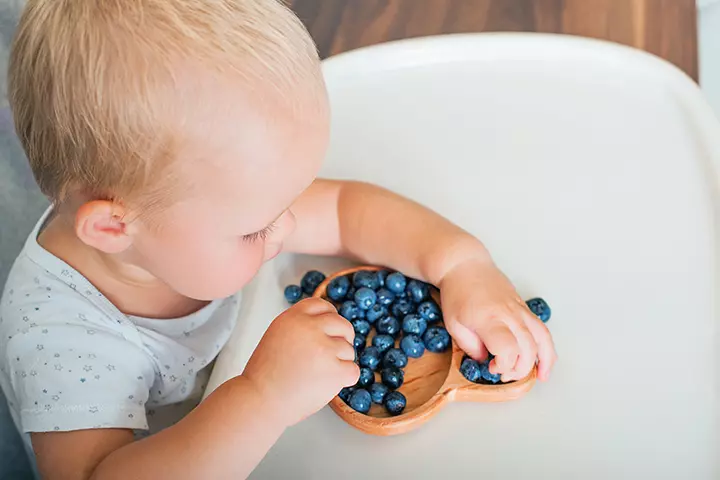
- Jaundice: Jaundice causes increased bilirubiniAn orange-yellow pigment that occurs when red blood cells break down concentration in the blood. This condition is called hyperbilirubinemia, which can cause an accumulation of bilirubin in the various tissues of the body. When bilirubin levels are elevated for several weeks, it may deposit on the teeth leading to green color. This kind of discoloration is often permanent as it causes permanent changes in the color of the tooth enamel and dentin of the teeth (10).
What Are The Symptoms Of Tooth Discoloration And Staining?
The stains can be broadly categorized into two types:
- Extrinsic stains: The stains appear due to the action of external factors such as diet medicines, bacteria, etc. It is relatively easy to get rid of these stains. They affect the tooth’s top layer, which is called the enamel.

- Intrinsic stains: They occur when the staining is beyond the enamel, in the deeper layers of a tooth. This discoloration can happen due to multiple reasons, including infection and congenital stain. These stains are difficult to remove.
Based on the relevant evidence, it is said that tooth discoloration can be found in nine different color spectrums: black, brown, blue, green, grey, orange, pink, red, and yellow.
Each color might represent a different cause (11).
What Are The Various Colors Of Stain
Several predisposing factors could cause discoloration of the teeth. Each stain color could be a result of individual factors or conditions.
- Yellow or orange color stains: This kind of stain usually appears when the plaque that is lining the gums absorbs color from the food or drinks that the baby is consuming. Proper brushing can get rid of them. Avoid giving food and drinks with a lot of added food colors. If you can’t manage the stains by yourself, seek the advice of a dentist.
- Black stains or dark stains: These are the most commonly seen stains in babies (12). If your baby takes iron supplements, then they might likely develop black stains. Black stains might also appear due to necrosisiThe death of the body tissue it receives insufficient blood of tooth’s pulp, in the case of a fall or an injury. Check with your baby’s dentist if they can scrub up and remove the stains.
- Mottled brown patches or white spots on teeth: Such discoloration might be a sign of fluorosisiYellow or brown speckles on the teeth caused by overexposure to fluoride in the early stages of life (13). It might happen if the toddler uses a high quantity of fluoridated toothpaste or ingests fluoridated toothpaste. It may even occur when drinking water has too much fluoride. Pediatrician Dr. Raashid Hamid says, “Excessive fluoride exposure during tooth development can cause dental fluorosis, presenting as white spots or streaks on the teeth. Monitoring fluoride intake is key to prevention.” Use toothpaste with low fluoride concentration for your baby until he/she learns to spit and not swallow. You may consider alternative water sources if the drinking water in your area has high levels of fluoride.
 Experts say
Experts sayIf the teeth discoloration is due to a certain food that the baby or toddler ate (like beetroot or berries), then it will be temporary. However, if the discoloration seems deep and you suspect a problem, then see a dentist.
Treatment For Tooth Discoloration
The over-the-counter teeth whitening or bleaching agents are not suitable for babies and toddlers. The decision to create a treatment plan should be left to the dentist, who can use a combination of treatment methods (14).
- For teeth with minor yellow stains, your dentist may suggest you brush your toddler’s teeth with adult toothpaste.
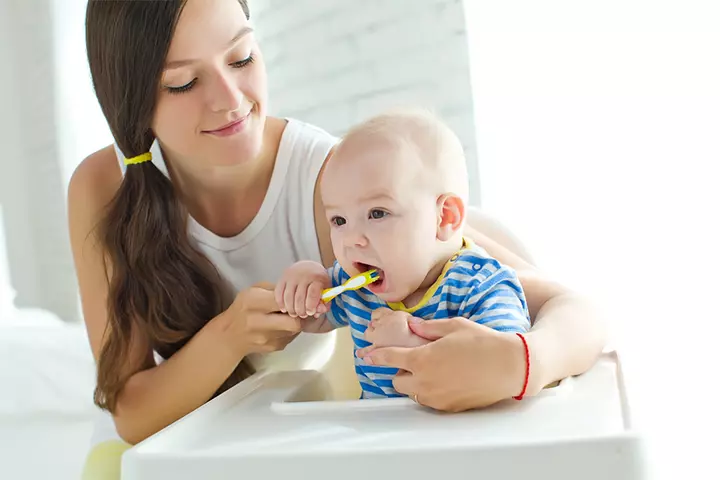
- Adding baking soda to the toothpaste may help reduce the stains.
- In some cases of extrinsic stains, the dentist may recommend professional cleaning and polishing of teeth.
- In some cases, when the teeth are discolored to the point of being aesthetically unpleasant, then the dentist may consider using medically-approved bleach.
- When the teeth are broken or appear crooked due to the damage caused by cavities, fluorosis, or weak enamel, your dentist might recommend putting tooth-colored crowns for your toddler.
- In some cases, the dentist might do microabrasioniA procedure in cosmetic dentistry done to improve the appearance of the teeth on the surface of teeth to get rid of the stains. Microabrasion is the removal of the top layer of teeth by a few millimeters.
- The dentist may use a pumice mixture to remove the stains on the surface of teeth for your toddlers.
Removal of stains and discoloration should only be done by a dentist.
How To Prevent Discoloration Of Teeth?
Tooth discoloration in babies and toddlers can be avoided by following some good practices. Try and include these changes in your baby and toddler’s daily routine (15) (16).
- Brush your baby or toddler’s teeth twice a day. Older toddlers can be encouraged to brush their teeth themselves under the supervision of a parent. Speak to your dentist to learn the correct techniques of cleaning your baby’s teeth. A study in the Journal of Environmental Research and Public Health found that among 200 parents of children aged 2 months to 6 years, 59% emphasized daily oral hygiene practices at home after the emergence of their child’s first baby tooth (17).
- Clean the gums and mouth using a clean gauze even before the teeth erupt.
- Do not give a baby or a toddler sugary juices and sodas. Do not use pacifiers dipped in honey or sweet liquids. A study involving 200 parents of children aged 2 months to 6 years identified about 8% of parents using sweetening pacifiers or bottles with substances such as honey (17).
- Dental check-ups for babies and toddlers are as important as they are for adults. Start scheduling dental check-ups with your dentist every six months as the first teeth erupt.
- If you observe iron supplements causing tooth discoloration in babies, make a habit of cleaning up the oral cavity by wiping, brushing, or rinsing immediately after giving the supplement. This will prevent the stain from setting onto the teeth.

- Avoid bottle feeding at night. It might be the main reason for early childhood caries. The presence of milk and sugar makes the environment of the oral cavity ideal for bacterial growth.
 Quick tip
Quick tip- Use toothpaste with low fluoride content until the baby learns how to spit it out.
Frequently Asked Questions
1. Can a discolored tooth heal completely?
The treatment of a discolored tooth depends on the underlying cause. If the discoloration is due to poor oral hygiene or extrinsic stains, it can be removed easily by brushing, cleaning, or polishing. However, if caused by other factors such as cavities and fluorosis, the discoloration cannot be cured (18).
2. How can I differentiate between a tooth discoloration and a cavity in my baby?
A cavity is brown to dark black in color and may result in an underlying hole in the tooth. Symptoms such as sensitivity, pain, or food lodgement may accompany. A stained tooth is structurally intact, and there are no associated discomforts (19).
3. Can iron deficiency cause teeth discoloration?
Iron deficiency isn’t a known cause of teeth discoloration. However, studies suggest that extrinsic black stains on teeth may indicate iron deficiency anemia or excess iron accumulation (20).
4. Can formula stain baby teeth?
Some research studies indicate that infants may have extrinsic staining of the teeth due to excess dietary iron consumption from formulas and food sources fortified with iron (21).
5. What vitamin deficiency causes brown teeth?
Brown teeth aren’t usually a common symptom of vitamin deficiency. However, a group study found that vitamin D deficiency in childhood may contribute to the development of dental caries, which may cause brown to yellow teeth (22).
Teeth discoloration may be seen in nine various color spectrums, including black, brown, blue, green, grey, orange, pink, red, and yellow, but it isn’t a cause for concern. So, if you see discoloration of teeth in babies and toddlers, the cause might be congenital, medical, or lifestyle-related, like improper brushing. Monitoring your baby’s or toddler’s mouth cavity regularly will keep you informed of any major or little changes. It will also help with early detection so that your child’s dentist can correct the discoloration. So, clean your baby’s teeth twice a day and avoid giving your infant sugary juices and sodas to prevent tooth discoloration.
Infographic: Choosing The Best Toddler Toothbrush And Toothpaste
While regular brushing and the brushing technique play a significant role in oral hygiene maintenance, choosing the right toothbrush and paste is half the job done. So go through this infographic to learn about the points to keep in mind while buying them to get the best results for your toddler’s teeth. Illustration: Momjunction Design Team
White spots on baby teeth can be caused by poor oral hygiene, excessive fluoride, or even genetics. Watch this video where an expert discusses the diagnosis and treatment of the spots.
References
Community Experiences
Join the conversation and become a part of our nurturing community! Share your stories, experiences, and insights to connect with fellow parents.
Read full bio of Dr. Shailesh Shenoy
- Dr. Raashid Hamid is a consultant in the department of Pediatric Surgery at GMC hospital and associate professor of Pediatric and Neonatal Surgery at SKIMS, Jammu & Kashmir, India. He has four years of experience and specializes in general surgeries, including appendectomy, cholecystectomy, and exploratory laparotomy.
 Dr. Raashid Hamid is a consultant in the department of Pediatric Surgery at GMC hospital and associate professor of Pediatric and Neonatal Surgery at SKIMS, Jammu & Kashmir, India. He has four years of experience and specializes in general surgeries, including appendectomy, cholecystectomy, and exploratory laparotomy.
Dr. Raashid Hamid is a consultant in the department of Pediatric Surgery at GMC hospital and associate professor of Pediatric and Neonatal Surgery at SKIMS, Jammu & Kashmir, India. He has four years of experience and specializes in general surgeries, including appendectomy, cholecystectomy, and exploratory laparotomy. 
Dr. Po-Chang Hsu is a medical doctor and medical content expert. He received his medical degree from Tufts University School of Medicine in Boston in 2016. Previously, he did a master’s degree at Harvard University and wrote a thesis on neuroimaging in schizophrenia patients at Brigham and Women’s Hospital. He currently works at Alpas Wellness.
Dr. Po-Chang Hsu is a medical doctor and medical content expert. He received his medical degree from Tufts University School of Medicine in Boston in 2016. Previously, he did a master’s degree at Harvard University and wrote a thesis on neuroimaging in schizophrenia patients at Brigham and Women’s Hospital. He currently works at Alpas Wellness.
Read full bio of Dr. Ritika Shah
Read full bio of Rohit Garoo
Read full bio of Shinta Liz Sunny





